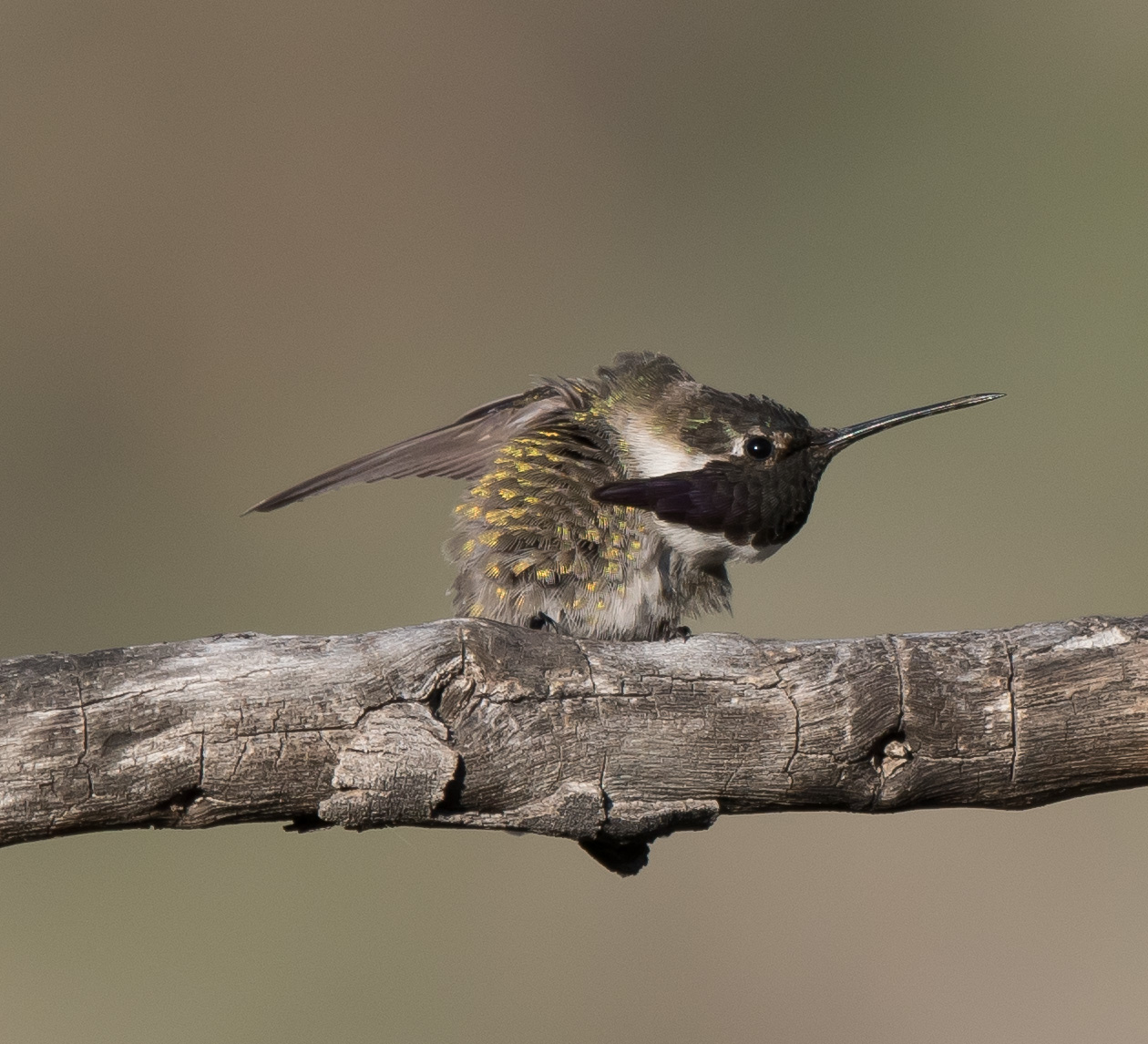Wanting to be adventurous, Ellen once again joined me on checking out a new birding spot: the 1688 road/trail on Mt Ord in Arizona. I think it is referred to as a road, but most vehicles would have a tough time navigating it. But it is a fantastic hiking trail. It is located on the west side of Mt Ord so it is entirely in Maricopa County and the trail is about 2 miles long and then the 2 miles return made for a great hike and some much needed exercise. We got started early in the morning and with the higher elevation, it made for a very cool and comfortable hike. We felt pretty good as the first bird we actually saw was a Painted Redstart. In all, we saw 3 on our hike but heard more and of those three we actually saw, 2 of them were juveniles from this year's hatch, which is nice to know that this species is breeding on Mt Ord. Here is a photo of one of the juveniles (no red on their bellies)!
Painted Redstart
One of the next exciting birds birds was a Black-throated Gray Warbler juvenile that flew across our trail in front of us and then proceeded to come out and pose for us. Maybe it was checking us out since it was a juvenile and had not inherited its caution with humans yet. Very striking little birds with that spot of yellow in front of the bill which is quite interesting.
Black-throated Gray Warbler, Juvenile
Black-throated Gray Warbler, Juvenile
Another fairly common bird that we found were Western Wood Pewees doing what they do best, perching on bare branches and flying out to snag an insect and return to its perch.
Western Wood Pewee
We also discovered 3 Greater Short-horned Lizards during our hike; 2 adults and then a young one. Does a baby lizard have a name? Many people call these lizards, Horny Toads, but in fact they are lizards, not amphibians. I don't see these that often, so when I do I get excited at seeing them and I am always amazed at them.
Greater Short-horned Lizard, Adult
Greater Short-horned Lizard, Baby
It is probably a toss-up on which bird was the most numerous during our hike; the Blue-gray Gnatcatcher or the Rufous-crowned Sparrow. The gnatcatcher can be found in a lot of places in AZ and they are active and busy as most small birds are. Couldn't seem to capture a decent photo of one sitting in the sun for me, so I had to settle for this photo of one in the process of hopping from one twig to another.
Blue-gray Gnatcatcher
The Rufous-crowned Sparrow had eluded me until last year when I found my first 2, but this trip really increased my count of this species. They were everywhere along the trail and I finally had a couple stop long enough to let me capture some decent photos of them. One photo is a straight on head shot that readily shows off the strong facial markings of this bird and the second photo give a side view of this bird. It was very nice to capture some decent photos of this sparrow to add to my sparrow collection.
Rufous-crowned Sparrow
Rufous-crowned Sparrow
This place is definitely a worthwhile place to visit for the views, scenery, birds and other wildlife and of course the solitude. We only encountered 1 other person during our 4 mile hike. Need to stay in shape for some upcoming short trips planned in the month of August.
























































